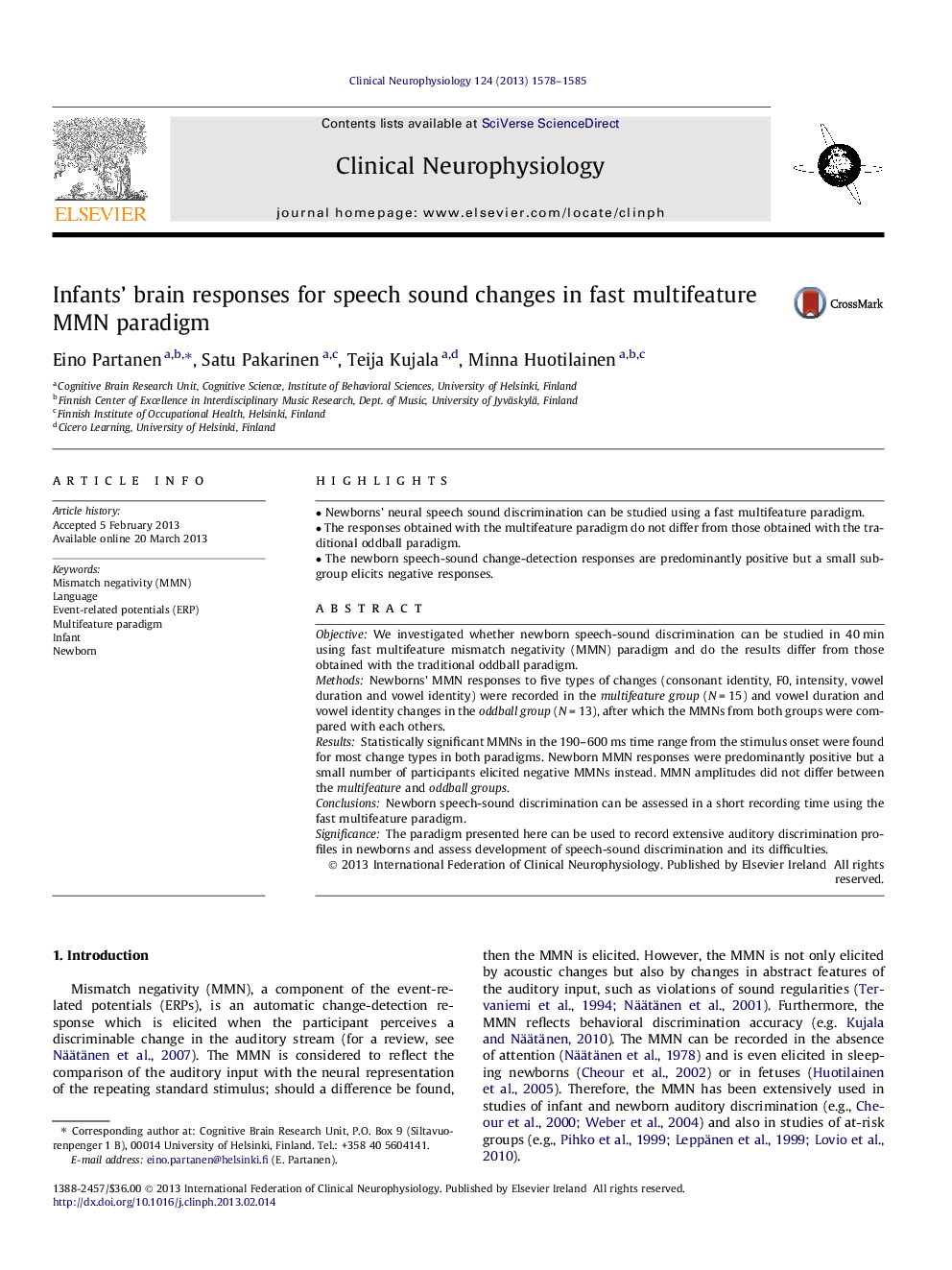| Article ID | Journal | Published Year | Pages | File Type |
|---|---|---|---|---|
| 3045183 | Clinical Neurophysiology | 2013 | 8 Pages |
ObjectiveWe investigated whether newborn speech-sound discrimination can be studied in 40 min using fast multifeature mismatch negativity (MMN) paradigm and do the results differ from those obtained with the traditional oddball paradigm.MethodsNewborns’ MMN responses to five types of changes (consonant identity, F0, intensity, vowel duration and vowel identity) were recorded in the multifeature group (N = 15) and vowel duration and vowel identity changes in the oddball group (N = 13), after which the MMNs from both groups were compared with each others.ResultsStatistically significant MMNs in the 190–600 ms time range from the stimulus onset were found for most change types in both paradigms. Newborn MMN responses were predominantly positive but a small number of participants elicited negative MMNs instead. MMN amplitudes did not differ between the multifeature and oddball groups.ConclusionsNewborn speech-sound discrimination can be assessed in a short recording time using the fast multifeature paradigm.SignificanceThe paradigm presented here can be used to record extensive auditory discrimination profiles in newborns and assess development of speech-sound discrimination and its difficulties.
► Newborns’ neural speech sound discrimination can be studied using a fast multifeature paradigm. ► The responses obtained with the multifeature paradigm do not differ from those obtained with the traditional oddball paradigm. ► The newborn speech-sound change-detection responses are predominantly positive but a small subgroup elicits negative responses.
